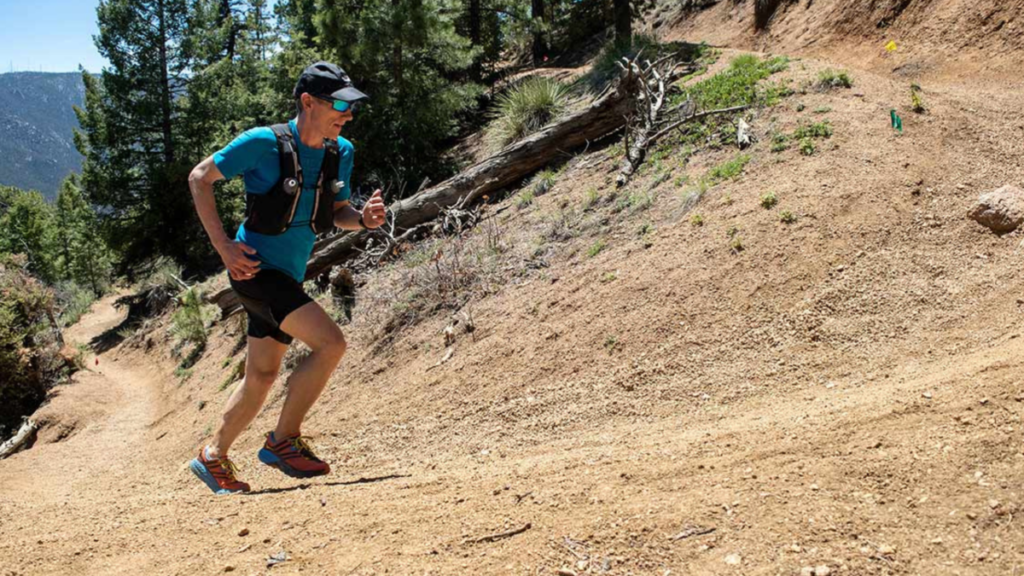
I’m sure you know the feeling of running uphill, gasping air into your burning lungs, and feeling your pulse thumping inside your skull. More than once the thought has crossed my mind that this can’t be good for me. But, is running uphill actually harmful? I decided to find out.
Running uphill is the most harmless form of running as you are moving slower with less impact force compared to downhill running. If you do trip while running uphill there is much less distance to fall, reducing the risk of getting hurt.
Let’s have a closer look at the potential risks of running uphill and how you can safely avoid them.
Is Running Uphill Harmful?
Trail running is the type of running that is filled with adventure, fun, and thrill. It usually involves running uphill, which could be challenging for anyone, especially first-time mountain runners.
Generally, running uphill is a safe and beneficial physical activity that has several advantages for physical and mental health. As long as the mountain runners are well prepared, healthy, strong, and knowledgeable of the trail, their health and body will not be harmed by the said activity.
Running uphill is technically and basically harmless as long as it is done properly and with abidance by the rules and protocols. However, running uphill could be harmful if certain risks are not given attention.
Risks In Running Uphill
There are risks in every physical activity and that includes running uphill. When mountain runners run uphill, they could face physical injuries, especially in their lower limbs. However, this risk is really low compared to running on the flat or running downhill.
It is found that most marathoners who get injured while trail running experience injuries in their knees, shins, or ankles because of the greater eccentric loads on them.
When mountain runners heel-strike while running uphill, there is a chance of over-flexing the Achilles tendon and Soleus muscle.
Other health risks when running uphill for trail runners and mountain runners include altitude sicknesses when running at higher altitudes. This includes high altitude pulmonary edema (HAPE) and high altitude cerebral edema (HACE). These can happen when perfectly healthy people run uphill at high altitudes of over 8,000ft (2,500 meters) and results in their lungs filling with fluid or brain building dangerous fluid pressure.
This is something to bear in mind at races like the Leadville 100 where the lowest point on the route (Twin Lakes) is at 9,603ft (2,927 meters).
How To Run Uphill Safely
There are a few easy and important things to do in order to make sure that mountain runners run safely uphill.
- Be well prepared and study the trail you will be running.
- Be healthy and strong and have sufficient energy for the upcoming mountain running.
- Practice running uphill regularly and do your best to avoid heel striking while running uphill.
- Take short breaks or rests when trail running and don’t be afraid to walk in steep technical terrain.
- Run safely by following the protocols and avoiding dangerous paths and altitudes.
Take Note Of These Pre-Existing Medical Issues when running uphill
If the trail runner has pre-existing medical issues like cardiovascular diseases, lung problems, asthma, and other health issues, it would be best to ask for a doctor’s recommendation before allowing the person to join the upcoming trail running.
Not being aware of these pre-existing medical issues could lead to life-threatening complications and even death. It would always be best to make sure that mountain runners are completely healthy and ready for the run.
Health Benefits Of Interval Training Including Running Hill Repeats
When mountain runners run uphill, they also do interval training which is a high-intensity and fast calorie-burning physical activity. Interval training has many benefits for physical and mental health.
It could help trail runners burn calories more because of high-intensity exercises. It stimulates brain activity and mental state because it is not thrilling and fun to do. Moreover, it helps the body to become stronger, fitter, faster, and healthier overall.
